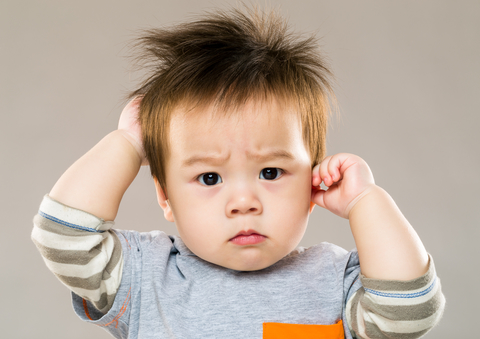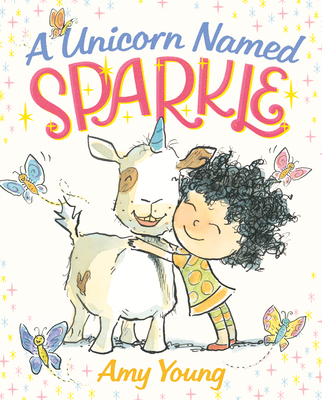
© Leung Cho Pan | Dreamstime.com
Last week, I argued for breaking down the artificial and rigid age barricades we erect around picture books. This week, I am pleading to bring back some sanity surrounding the age-appropriateness of board books, those thick-paged little books that used to be created with our very youngest readers in mind, but are now becoming a strange land where books meant for ages 4-7 are suddenly in toddler format.
Increasingly, publishers are turning popular picture books into board books whether or not the content, style, complexity, or topic is appropriate for children under the age of three. It’s as though folks have decided to ignore Piaget altogether, or have never read a board book with an actual toddler.
I’m not talking about tongue-in-cheek books like Urban Babies Wear Black, Quantum Physics for Babies, or Libby Babbott-Klein and Jessica Walker’s Baby Feminists (a personal favorite). These titles telegraph the fact that they are really intended as gifts for parents, and if they are good books, like the ones mentioned above, the illustrations and text offer something fun for baby, too, like Baby Feminists‘ lift-the-flaps activity.
[Side note: while I get a kick out of the hard-science concept board books, I do question this year’s Neural Networks for Babies (!).]
Recently, I’ve been seeing so many picture books written for ages 4-7 now squished into the board book format. Either the text is abridged, which really should be a sign that the story isn’t right for a board book, or the text is unabridged but the font is very small to accommodate all those words. My main quarrel with these titles isn’t the length; it’s that the stories just don’t connect with the children whom board books aim to serve.
 For example, take Amy Young’s charming A Unicorn Named Sparkle. No one is a bigger fan of Sparkle than I am—I read it to pretty much every picture book shopper who comes to the store—but it’s definitely best with readers aged 4-7. The adorable art is toddler-friendly, but experience shows that the story is not too successful with children younger than five. A regular paperback edition would have been so much more welcome at our store, and would sell brilliantly for us.
For example, take Amy Young’s charming A Unicorn Named Sparkle. No one is a bigger fan of Sparkle than I am—I read it to pretty much every picture book shopper who comes to the store—but it’s definitely best with readers aged 4-7. The adorable art is toddler-friendly, but experience shows that the story is not too successful with children younger than five. A regular paperback edition would have been so much more welcome at our store, and would sell brilliantly for us.I think publishers might be bypassing paperback editions of picture books because board books sell so well, but I don’t think this serves long-term viability for books that are simply too old for toddlers. Excellent picture books that find their true audience will go on and on, but aimed wrong, they might miss their mark—and their most ardent readers.
I also have trouble with the uptick in biographical board book series featuring inspiring current and historical role models. For instance, I love the idea behind the recent “I Look Up To” board book series, which introduces children to meaningful achievers like Malala Yousafzai and Serena Williams. But I admit I got stuck on the first pages of I Look Up to… Serena Williams:
“Serena is driven.
“Serena and her older sister Venus love and respect each other, even though they compete with each other at the highest level of the sport.”
I’m a huge admirer of the phenomenal Williams sisters, but I have a hard time imagining that a two- or three-year-old would be able to connect to that opener. Even if they understood the words, they lack the contextual experience to appreciate the complex set of emotions encompassed in those sentences.
While children should be introduced to real role models as early and often as possible, often the stories we share mean zippity-doo-dah to a two-year-old. How can we explain Serena’s incredible achievements without also discussing her battles against racism and sexism? How can we introduce Malala’s heroism without sharing the traumatic event that brought her story to the outside world? Wouldn’t it be better to wait just a few years until young children can truly appreciate these admirable heroes? Or work a little harder to marry the delivery of the information to the age of the listener?
Maybe I’m being rigid here, exactly the way I was complaining about people last week, who define picture book audiences too narrowly. But I do think we are rushing children ever faster out of age-appropriate books, and to what end?
Not every board book needs to be Yummy! Yucky! or More, More, More, Said the Baby or We’re Going on a Bear Hunt or Jamberry (although, why not?), but seriously, let’s not forget the end user in these marketing meetings. Sure, many of these books will sell well in the short-term, but they won’t endure if toddlers don’t want to hear them again and again and again.


Thank you for this article. I completely agree that the content of a lot of recent board books is too sophisticated for the developmental level of toddlers. And when a wonderfully-crafted picture book is shrunk down to board book size (rearranging the page-turns of the original, altering the pacing, or worse, eliminating some of the text and illustrations), it often results in an inferior story. Let the board book crowd have books created just for them, and allow them to experience picture books as they were meant to be read when they’re a little older.
Excellent point!
This is so true! The tiny font is always a major flag for me that a picture book has been shoe-horned into the board book format.
So true, Elizabeth. My kids’ very favorite board book was the almost wordless, Good Night Gorilla. However, there I’m confused about the fact that there is an audiobook available!
I absolutely agree with you and my only argument on behalf of the board book is that they hold up so well to endless readings. Paperback books tend to wear out and even our most beloved hardcovers required replacement copies but my kids have yet to wear out a board book!
I do love the sturdiness of board books, and wouldn’t mind them at all for slightly older children, but since most kids that age think board books are baby books, it would require a bit of a culture shift to change that view. (I’m always for a good culture shift.)
I agree with you 100%. It’s a bit ridiculous the number of picture books being shrunk and pushed into board book format and thinking they are appropriate for toddlers. Maybe an oversized board book that will withstand the wear and tear of reading favorite stories over and over again to preschoolers and up would be a better format.
Agree!! Also, I also struggle with books clearly meant for toddlers coming out in picture book format first then later board books. Let’s go straight to board book in maybe a slighty larger format so parents will let the toddlers hold the book and not stress about the costs of a brand new picture book. My latest example is Baby Day. So cute!! But wouldn’t it be great if it were in a larger size board book so babies and toddlers can get their hands (and mouths) on characters who look just like them. 🙂
I respectfully disagree. I think the board book is an untapped format for all ages, even though it has been traditionally associated with babies and toddlers. A new frontier for authors and artists to pioneer awaits its limited number of sturdy pages. A trend to be set. A potential, positive fad to follow. Affordable to print. Trim sizes easy to hold. A canvas for big ideas in small packages, for ages 0-100!
Hi, Dale! Thanks for your comment. I am not opposed to the philosophy of board books being used by older children – it’s just that currently, once kids are around 3, people stop buying board books for them, so those longer, more complex, thematically older books are lost on the audience who actually read them. It would require a cultural shift, I think.
You echoed my “grrrs” as I peruse the board books section and find a growing number of books with ridiculously sophisticated plots and language.
May I offer a different perspective. I am the mother of a very advanced reader, who at the age of 4 was able to read chapter books and I am also the mother of a child with multiple disabilities, who loves to sit with us and read. His motor skills will always be markedly behind his ability to embrace literature. Having the opportunity to chose a board book where he can turn the pages himself gives him a sense of independence and success that would elude him in a traditional book. I appreciate that many publishers are offering their books as hardback, paperback, board-books and library bound. Having to preview a book is well worth the time and effort to make literacy accessible to all.